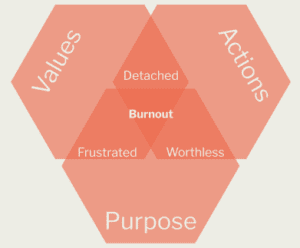
The Power of Alignment
Throughout history we have seen many incredible ideas, concepts, inventions and philosophies originating from some inspirational individuals. However, without the input of others, those ideas would not have sustained growth, longevity and success. Humanity has come to understand that It is the power of the team that then turns that idea into reality and allows further development. But even the most hardworking, intelligent and productive team will struggle to find their way together if they are not fully aligned and have a clear universal understanding of the ultimate goal and the process needed in order to achieve it.
ISA Global’s organisational alignment research found that ‘culture accounts for 40% of the difference between high and low performing companies in terms of revenue, profits, customer satisfaction and retention, leadership effectiveness, and employee engagement.’
The importance of having an aligned organisation is clear, we know that misalignment contributes to attrition, pushback on change, and dysfunctional teams. But do we know how to recognise it in our own organisations and if we do recognise it, do we know how to fix it?
To truly understand if our organisation is misaligned, we must first stand back, see the bigger picture, listen deeply to what individuals have to say, watch and study the current infrastructure and culture of our teams and the wider organisation.
If alignment is present in our organisation we may see these things:
- Our teams are living the mission and values of your organisation and bringing them to life in all they do
- Everyone is encouraged and capable of finding creative solutions
- Decisions are made and things get done without fear of failure
- There is evidence of good healthy relationships and friendships within our organisation
- We see some emotional, connected and impassioned moments
- There are shared stories that lift morale
- People demonstrate discretionary effort
- Decisions are made with our stakeholders in mind
- Production is consistent and efficient
- Problems are solved quickly and learnings are embraced and actioned
- We have healthy staff retention
- We have agile and coordinated teams
- Our employees show accountability
- Mistakes are few and far between and dealt with with empathy.
- Our employees feel motivated, safe and happy
By definition, even if there’s only one person who is misaligned and on a different path, we will still have misalignment in some capacity. The more responsibility that person has, the more damage they will be able to effect. One or many, you still have the same problem.
If alignment is lacking we may see these things:
- Negative influence on customer relations
- Minimisation of sales and profits
- Miscommunication and avoidable setbacks
- A ‘them and us’ attitude to seniority
- Frustrations and blame
- Policy and procedure not correctly or consistently carried out
- Lengthy meetings that go nowhere
- Silo working and lack of engagement
- Lack of trust
- Distraction and time wasting
- Apathy and quiet quitting
- High emotion, gossip and drama
- Lack of knowledge about the company values, vision and mission
- Leaders managing
If we are seeing some of the above in our organisation it may be time to take that leap, to disrupt the status quo and hold a mirror to the face of misalignment. It may seem like a decision that will lose us time and money and potentially valuable employees, but, the truth is that organisational misalignment could potentially be the poison that slowly kills the efficiency and effectiveness of our business. A recent study from Researchscape found that 47% of workers believe that some projects fail to meet objectives because of alignment issues, and 46% felt that misalignment had caused them to feel anger and frustration.The MIT Sloan Management Review indicated that only 28% of leaders and middle managers responsible for executing strategy could actually identify their company’s strategic priorities, the percentage decreasing, the further down the reporting line they went. Research by Gartner indicates that within their organisation 77% of executives feel like they are a part of something important, compared to only 59% of employees. Which suggests that there is an assumption that these things are known and adhered to at every level, when in fact those key alignment factors have inadvertently reached the end of the metaphorical line.
If we are ready to make the change to enable the success of our company and those who work in it – we are going to need to start with a collective agreement to move forward. You won’t be able to achieve this single handedly.
Getting the ball rolling
First steps are going to be all about Buy -in. Invite everyone to be part of the process as we reevaluate who we are, what we do, where we are now and ultimately, where we want to be. Collectively. Then and only then will we motivate everyone to come along for the ride; united, empowered and genuinely committed.
What are the steps to realignment?
- We’ve watched, listened and learned and diagnosed the presence of misalignment in our organisation.
- We’ve gathered our senior team and opened up the conversation.
- We’ve enlightened the doubters, calmed the mavericks and reassured the believers
- We’ve drawn a picture of what good looks like, what we want to work towards and made it clear that we need our leaders to be in or they are out
- Now it’s time to create the alignment strategy, utilising the power of collective intelligence.
– Define your vision mission values and goals.
– Agree the cultural shifts that are needed and will have the most impact
– Define short and long term action plans and targets and assign ownership
– Establish a way to track accountability and to measure success
– Find your alignment ambassadors at every level across the organisation and give them the tools to support and enable the change process
– Share the vision with your entire organisation and help them understand why the change needs to happen
– Keep listening
– Encourage feedback and keep listening
– Future proof the alignment of your organisation by imbedding your values vision and mission within every aspect of your operation
The bottom line?
Depending on the size and make up of your organisation any form of fundamental culture change is lengthy, takes time to design and implement and costs money. But in the long run, you will increase productivity, turnover, morale, wellbeing and reputation. That’s got to be worth the effort.
Ready to realign your organisation for success? Take the first step towards a unified and thriving organisation.













































